Dr. Weeks’ Comment: These are wonderful – celebrate!
Self-Refinement Through the Wisdom of the Ages: 15 Resolutions for 2015 from Some of Humanity’s Greatest Minds
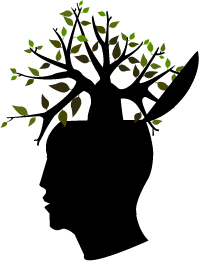 At the outset of each new year, humanity sets out to better itself as we resolve to eradicate our unhealthy habits and cultivate healthy ones. But while the most typical New Year’s resolutions tend to be about bodily health, the most meaningful ones aim at a deeper kind of health through the refinement of our mental, spiritual, and emotional habits – which often dictate our physical ones. In a testament to young Susan Sontag’s belief that rereading is an act of rebirth, I have revisited the timelessly rewarding ideas of great thinkers from the past two millennia to cull fifteen such higher-order resolutions for personal refinement.
At the outset of each new year, humanity sets out to better itself as we resolve to eradicate our unhealthy habits and cultivate healthy ones. But while the most typical New Year’s resolutions tend to be about bodily health, the most meaningful ones aim at a deeper kind of health through the refinement of our mental, spiritual, and emotional habits – which often dictate our physical ones. In a testament to young Susan Sontag’s belief that rereading is an act of rebirth, I have revisited the timelessly rewarding ideas of great thinkers from the past two millennia to cull fifteen such higher-order resolutions for personal refinement.
1. THOREAU: WALK AND BE MORE PRESENT
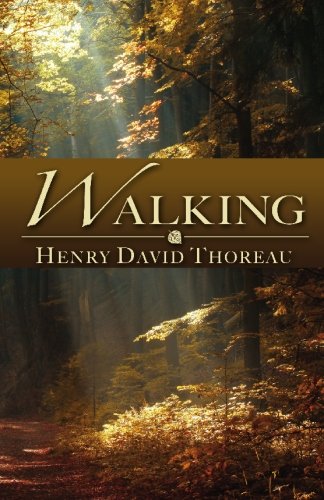 No one has made a more compelling case for the bodily and spiritual value of walking – that basic, infinitely rewarding, yet presently endangered human activity – than Henry David Thoreau. In his 1861 treatise Walking(free ebook | public library), penned seven years after Walden, Thoreau reminds us of how that primal act of mobility connects us with our essential wildness, that spring of spiritual vitality methodically dried up by our sedentary civilization. He makes a special point of differentiating the art of sauntering from the mere act of walking:
No one has made a more compelling case for the bodily and spiritual value of walking – that basic, infinitely rewarding, yet presently endangered human activity – than Henry David Thoreau. In his 1861 treatise Walking(free ebook | public library), penned seven years after Walden, Thoreau reminds us of how that primal act of mobility connects us with our essential wildness, that spring of spiritual vitality methodically dried up by our sedentary civilization. He makes a special point of differentiating the art of sauntering from the mere act of walking:
I have met with but one or two persons in the course of my life who understood the art of Walking, that is, of taking walks – who had a genius, so to speak, for sauntering, which word is beautifully derived “from idle people who roved about the country, in the Middle Ages, and asked charity, under pretense of going a la Sainte Terre, to the Holy Land, till the children exclaimed, “There goes a Sainte-Terrer,” a Saunterer, a Holy-Lander. They who never go to the Holy Land in their walks, as they pretend, are indeed mere idlers and vagabonds; but they who do go there are saunterers in the good sense, such as I mean. Some, however, would derive the word from sans terre, without land or a home, which, therefore, in the good sense, will mean, having no particular home, but equally at home everywhere. For this is the secret of successful sauntering. He who sits still in a house all the time may be the greatest vagrant of all; but the saunterer, in the good sense, is no more vagrant than the meandering river, which is all the while sedulously seeking the shortest course to the sea.
Proclaiming that “every walk is a sort of crusade,” Thoreau laments – note, a century and a half before our present sedentary society – our growing civilizational tameness, which has possessed us to cease undertaking “persevering, never-ending enterprises” so that even “our expeditions are but tours.” With a dramatic flair, he lays out the spiritual conditions required of the true walker:
If you are ready to leave father and mother, and brother and sister, and wife and child and friends, and never see them again – if you have paid your debts, and made your will, and settled all your affairs, and are a free man – then you are ready for a walk… No wealth can buy the requisite leisure, freedom, and independence which are the capital in this profession… It requires a direct dispensation from Heaven to become a walker.
But the passage that I keep coming back to as I face the modern strain for presence in the age of productivity, 150 years later, is this:
I am alarmed when it happens that I have walked a mile into the woods bodily, without getting there in spirit. In my afternoon walk I would fain forget all my morning occupations and my obligations to Society. But it sometimes happens that I cannot easily shake off the village. The thought of some work will run in my head and I am not where my body is – I am out of my senses. In my walks I would fain return to my senses. What business have I in the woods, if I am thinking of something out of the woods?
Read more here.
2. VIRGINIA WOOLF: KEEP A DIARY
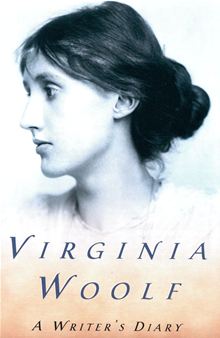 Many celebrated writers have extolled the creative benefits of keeping a diary, but none more convincingly than Virginia Woolf, who was not only a masterful letter-writer and little-known children’s book author, but also a dedicated diarist. Although she kept some sporadic early journals, Woolf didn’t begin serious journaling until 1915, when she was 33. Once she did, she continued doggedly until her last entry in 1941, four days before her death, leaving behind 26 volumes written in her own hand. More than a mere tool of self-exploration, however, Woolf approached the diary as a kind of R&D lab for her craft. As her husband observes in the introduction to her collected journals, A Writer’s Diary(public library), Woolf’s journaling was “a method of practicing or trying out the art of writing.”
Many celebrated writers have extolled the creative benefits of keeping a diary, but none more convincingly than Virginia Woolf, who was not only a masterful letter-writer and little-known children’s book author, but also a dedicated diarist. Although she kept some sporadic early journals, Woolf didn’t begin serious journaling until 1915, when she was 33. Once she did, she continued doggedly until her last entry in 1941, four days before her death, leaving behind 26 volumes written in her own hand. More than a mere tool of self-exploration, however, Woolf approached the diary as a kind of R&D lab for her craft. As her husband observes in the introduction to her collected journals, A Writer’s Diary(public library), Woolf’s journaling was “a method of practicing or trying out the art of writing.”
In an entry from April 20th, 1919, Woolf makes a case for the vast benefits of keeping a diary as a tool of refining one’s writing style – something Joan Didion echoed nearly a century and a half later in her timeless essay on keeping a notebook – and considers the optimal approach to journaling:
The habit of writing thus for my own eye only is good practice. It loosens the ligaments… What sort of diary should I like mine to be? Something loose knit and yet not slovenly, so elastic that it will embrace anything, solemn, slight or beautiful that comes into my mind. I should like it to resemble some deep old desk, or capacious hold-all, in which one flings a mass of odds and ends without looking them through. I should like to come back, after a year or two, and find that the collection had sorted itself and refined itself and coalesced, as such deposits so mysteriously do, into a mould, transparent enough to reflect the light of our life, and yet steady, tranquil compounds with the aloofness of a work of art. The main requisite, I think on re-reading my old volumes, is not to play the part of censor, but to write as the mood comes or of anything whatever; since I was curious to find how I went for things put in haphazard, and found the significance to lie where I never saw it at the time.
Read more here, then see other writers make the same case.
3. SENECA: MAKE YOUR LIFE WIDE RATHER THAN LONG
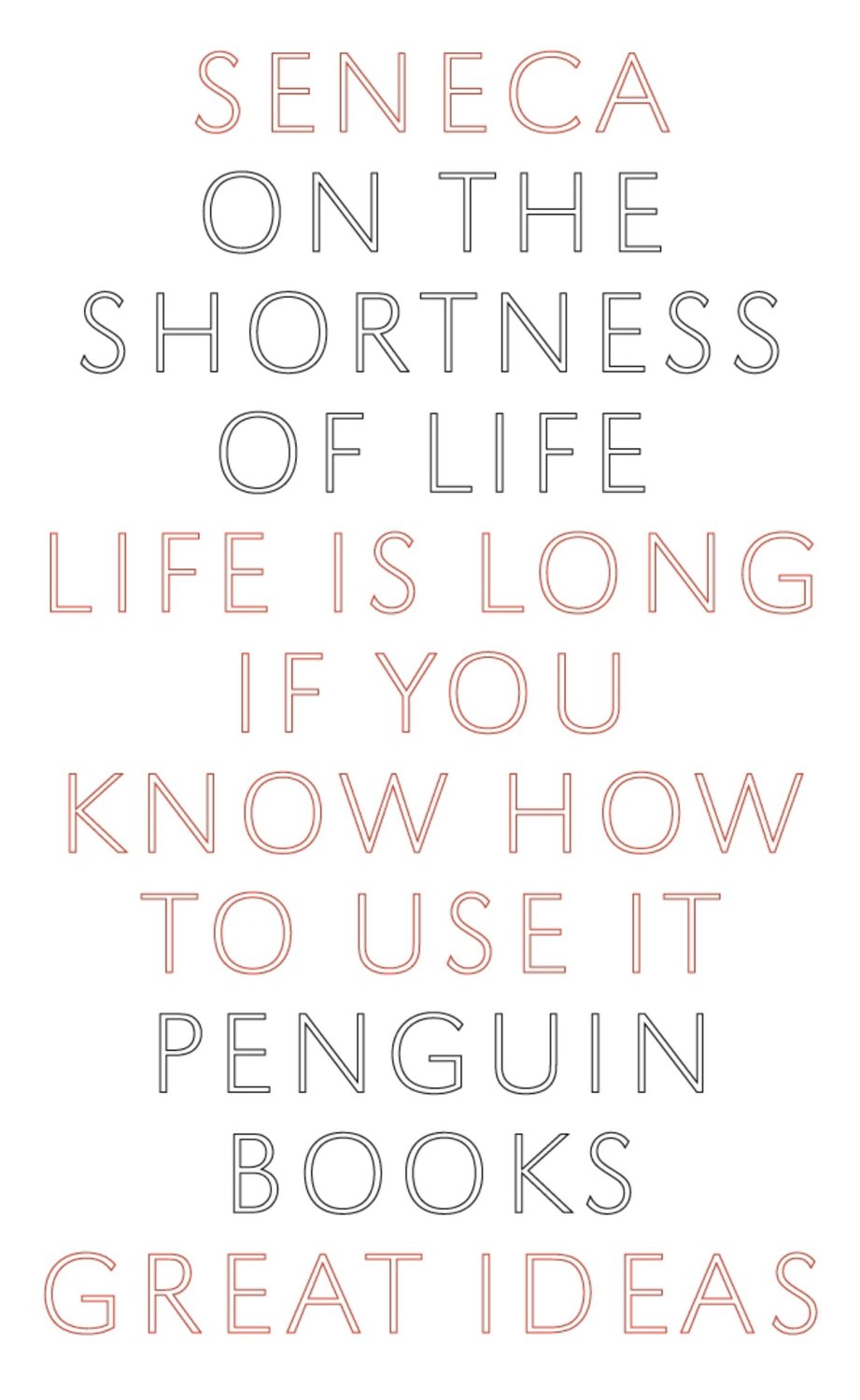 Around the time Thoreau was bemoaning his mind’s tendency to roam out of the woods while his body saunters in the woods, in another part of the world Kierkegaard was making a similar lament about our greatest source of unhappiness – the refusal to recognize that “busy is a decision” and that presence is infinitely more rewarding than productivity. I frequently worry that being productive is the surest way to lull ourselves into a trance of passivity and busyness the greatest distraction from living, as we coast through our lives day after day, showing up for our obligations but being absent from our selves, mistaking the doing for the being.
Around the time Thoreau was bemoaning his mind’s tendency to roam out of the woods while his body saunters in the woods, in another part of the world Kierkegaard was making a similar lament about our greatest source of unhappiness – the refusal to recognize that “busy is a decision” and that presence is infinitely more rewarding than productivity. I frequently worry that being productive is the surest way to lull ourselves into a trance of passivity and busyness the greatest distraction from living, as we coast through our lives day after day, showing up for our obligations but being absent from our selves, mistaking the doing for the being.
Despite a steadily swelling human life expectancy, these concerns seem more urgent than ever – and yet they are hardly unique to our age. In fact, they go as far back as the record of human experience and endeavor. It is unsurprising, then, that the best treatment of the subject is also among the oldest: Roman philosopher Seneca’s spectacular 2,000-year-old treatise On the Shortness of Life (public library) – a poignant reminder of what we so deeply intuit yet so easily forget and so chronically fail to put into practice.
Seneca writes:
It is not that we have a short time to live, but that we waste a lot of it. Life is long enough, and a sufficiently generous amount has been given to us for the highest achievements if it were all well invested. But when it is wasted in heedless luxury and spent on no good activity, we are forced at last by death’s final constraint to realize that it has passed away before we knew it was passing. So it is: we are not given a short life but we make it short, and we are not ill-supplied but wasteful of it… Life is long if you know how to use it.
To those who so squander their time, he offers an unambiguous admonition:
You are living as if destined to live for ever; your own frailty never occurs to you; you don’t notice how much time has already passed, but squander it as though you had a full and overflowing supply – though all the while that very day which you are devoting to somebody or something may be your last. You act like mortals in all that you fear, and like immortals in all that you desire… How late it is to begin really to live just when life must end! How stupid to forget our mortality, and put off sensible plans to our fiftieth and sixtieth years, aiming to begin life from a point at which few have arrived!
The cure he prescribes is rather simple, yet far from easy to enact:
Putting things off is the biggest waste of life: it snatches away each day as it comes, and denies us the present by promising the future. The greatest obstacle to living is expectancy, which hangs upon tomorrow and loses today. You are arranging what lies in Fortune’s control, and abandoning what lies in yours. What are you looking at? To what goal are you straining? The whole future lies in uncertainty: live immediately.
Read more about how to fill the length of your life with vibrant width here.
4. ANNA DEAVERE SMITH: DEFINE YOURSELF
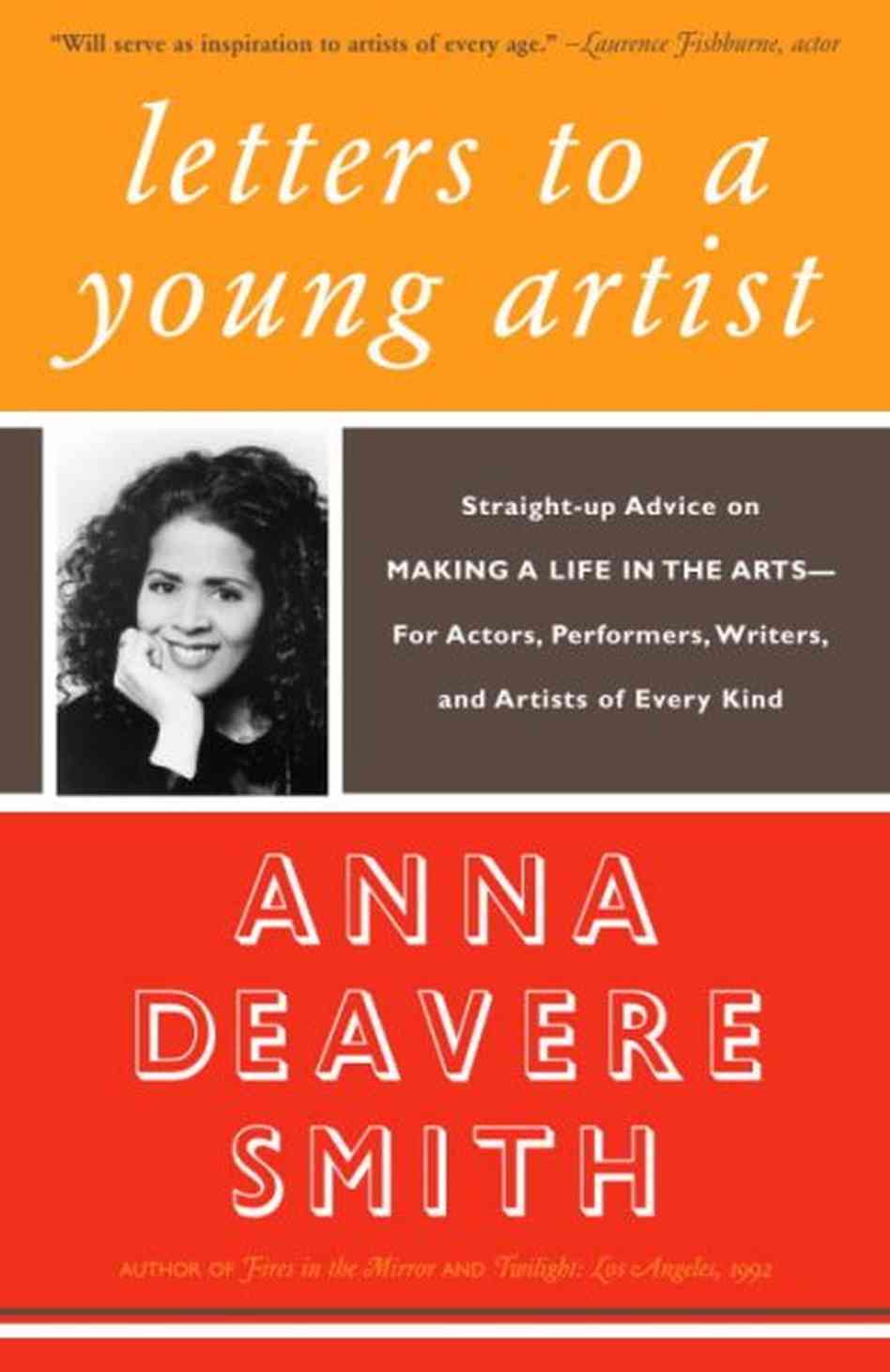 A great many creators have spoken to the power of discipline, or what psychologists now call “grit,” in setting apart those who succeed from those who fail at their endeavor of choice – including Tchaikovsky (“A self-respecting artist must not fold his hands on the pretext that he is not in the mood.”), Chuck Close (“Inspiration is for amateurs – the rest of us just show up and get to work.”), Anthony Trollope (“My belief of book writing is much the same as my belief as to shoemaking. The man who will work the hardest at it, and will work with the most honest purpose, will work the best.”), and E.B. White (“A writer who waits for ideal conditions under which to work will die without putting a word on paper.”). How to master the elusive art of discipline is what beloved artist, actor, playwright, and educator Anna Deavere Smith outlines in one of the missives in her immeasurably insightful and useful compendium Letters to a Young Artist: Straight-up Advice on Making a Life in the Arts for Actors, Performers, Writers, and Artists of Every Kind (public library).
A great many creators have spoken to the power of discipline, or what psychologists now call “grit,” in setting apart those who succeed from those who fail at their endeavor of choice – including Tchaikovsky (“A self-respecting artist must not fold his hands on the pretext that he is not in the mood.”), Chuck Close (“Inspiration is for amateurs – the rest of us just show up and get to work.”), Anthony Trollope (“My belief of book writing is much the same as my belief as to shoemaking. The man who will work the hardest at it, and will work with the most honest purpose, will work the best.”), and E.B. White (“A writer who waits for ideal conditions under which to work will die without putting a word on paper.”). How to master the elusive art of discipline is what beloved artist, actor, playwright, and educator Anna Deavere Smith outlines in one of the missives in her immeasurably insightful and useful compendium Letters to a Young Artist: Straight-up Advice on Making a Life in the Arts for Actors, Performers, Writers, and Artists of Every Kind (public library).
Smith writes:
Discipline – both mental and physical – is crucial.
Smith argues that discipline is also the single most important anchor of identity for creative people – the essential material out of which they craft the building blocks of how they define themselves:
The life of an artist is not a state of “being.” It even sounds pretentious, sometimes, to call oneself blanketly “an artist.” It’s not up to you or me to give ourselves that title. A doctor becomes a doctor because he or she is formally given an MD. A scholar in the university is formally given a PhD, a counselor an LLD, a hairstylist a license, and so forth.
We are on the fringe, and we don’t get such licenses. There are prizes and rewards, popularity and good or bad press. But you have to be your own judge. That, in and of itself, takes discipline, and clarity, and objectivity. Given the fact that we are not “credentialed” by any institution that even pretends to be objective, it is harder to make our guild. True, some schools and universities give a degree for a course of study. But that’s a business transaction and ultimately not enough to make you an “artist.”
Because an artist is never hit with the magic wand of legitimacy from the outside and “you have to hit your own head with your own handmade wand,” creative people are singularly vulnerable every time they put their art – whatever its nature – into the world. Without the shield of, say, a Ph.D. to point to and say, “But look, I’m real,” it’s all too easy to hang our merit and worth and realness on the opinions of others – opinions often mired in their own insecurities and vulnerabilities, which at the most malignant extreme manifest as people’s tendency to make themselves feel big by making others feel small, make themselves feel real by making others feel unreal. Smith captures the paradox of this condition elegantly:
We who work in the arts are at the risk of being in a popularity contest rather than a profession. If that fact causes you despair, you should probably pick another profession. Your desire to communicate must be bigger than your relationship to these chaotic and unfair realities. Ideally, we must be even more “professional” than lawyers, doctors, accountants, hairdressers. We have to create our own standards of discipline.
All of the successful artists I know are very disciplined and very organized. Even if they don’t look organized, they have their own order… What we become – what we are – ultimately consists of what we have been doing.
Read more on how to cultivate that discipline here.
5. ALAN WATTS: BREAK FREE FROM YOUR EGO
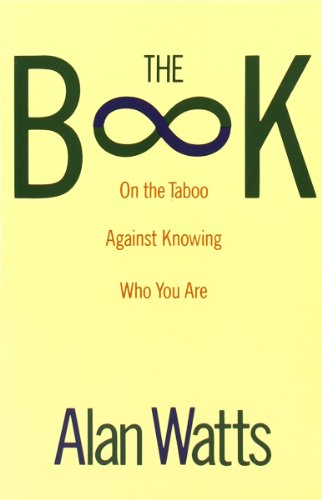 During the 1950s and 1960s, British philosopher and writer Alan Watts began popularizing Eastern philosophy in the West, offering a wholly different perspective on inner wholeness in the age of anxiety and what it really means to live a life of purpose. We owe much of today’s mainstream adoption of practices like yoga and meditation to Watts’s influence. His 1966 masterwork The Book: On the Taboo Against Knowing Who You Are (public library) builds upon his indispensable earlier work as Watts argues with equal parts conviction and compassion that “the prevalent sensation of oneself as a separate ego enclosed in a bag of skin is a hallucination which accords neither with Western science nor with the experimental philosophy-religions of the East.” He explores the cause and cure of that illusion in a way that flows from profound unease as we confront our cultural conditioning into a deep sense of lightness as we surrender to the comforting mystery and interconnectedness of the universe.
During the 1950s and 1960s, British philosopher and writer Alan Watts began popularizing Eastern philosophy in the West, offering a wholly different perspective on inner wholeness in the age of anxiety and what it really means to live a life of purpose. We owe much of today’s mainstream adoption of practices like yoga and meditation to Watts’s influence. His 1966 masterwork The Book: On the Taboo Against Knowing Who You Are (public library) builds upon his indispensable earlier work as Watts argues with equal parts conviction and compassion that “the prevalent sensation of oneself as a separate ego enclosed in a bag of skin is a hallucination which accords neither with Western science nor with the experimental philosophy-religions of the East.” He explores the cause and cure of that illusion in a way that flows from profound unease as we confront our cultural conditioning into a deep sense of lightness as we surrender to the comforting mystery and interconnectedness of the universe.
Envisioned as a packet of essential advice a parent might hand down to his child on the brink of adulthood as initiation into the central mystery of life, this existential manual is rooted in what Watts calls “a cross-fertilization of Western science with an Eastern intuition.”
Watts considers the singular anxiety of the age, perhaps even more resonant today, half a century and a manic increase of pace later:
There is a growing apprehension that existence is a rat-race in a trap: living organisms, including people, are merely tubes which put things in at one end and let them out at the other, which both keeps them doing it and in the long run wears them out.
At the heart of the human condition, Watts argues, is a core illusion that fuels our deep-seated sense of loneliness the more we subscribe to the myth of the sole ego, one reflected in the most basic language we use to make sense of the world:
We suffer from a hallucination, from a false and distorted sensation of our own existence as living organisms. Most of us have the sensation that “I myself” is a separate center of feeling and action, living inside and bounded by the physical body – a center which “confronts” an “external” world of people and things, making contact through the senses with a universe both alien and strange. Everyday figures of speech reflect this illusion. “I came into this world.” “You must face reality.” “The conquest of nature.”
This feeling of being lonely and very temporary visitors in the universe is in flat contradiction to everything known about man (and all other living organisms) in the sciences. We do not “come into” this world; we come out of it, as leaves from a tree. As the ocean “waves,” the universe “peoples.” Every individual is an expression of the whole realm of nature, a unique action of the total universe. This fact is rarely, if ever, experienced by most individuals. Even those who know it to be true in theory do not sense or feel it, but continue to be aware of themselves as isolated “egos” inside bags of skin.
Read more here, then revisit Watts’s related antidote to the age of anxiety.
6. CAROL DWECK: CULTIVATE A GROWTH MINDSET
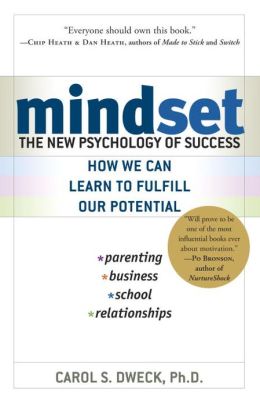 “If you imagine less, less will be what you undoubtedly deserve,” Debbie Millman counseled in one of the best commencement speeches ever given, urging: “Do what you love, and don’t stop until you get what you love. Work as hard as you can, imagine immensities…” Far from Pollyannaish platitude, this advice actually reflects modern psychology’s insight into how belief systems about our own abilities and potential fuel our behavior and predict our success. Much of that understanding stems from the work of Stanford psychologist Carol Dweck, synthesized in her remarkably insightful Mindset: The New Psychology of Success (public library) – an inquiry into the power of our beliefs, both conscious and unconscious, and how changing even the simplest of them can have profound impact on nearly every aspect of our lives.
“If you imagine less, less will be what you undoubtedly deserve,” Debbie Millman counseled in one of the best commencement speeches ever given, urging: “Do what you love, and don’t stop until you get what you love. Work as hard as you can, imagine immensities…” Far from Pollyannaish platitude, this advice actually reflects modern psychology’s insight into how belief systems about our own abilities and potential fuel our behavior and predict our success. Much of that understanding stems from the work of Stanford psychologist Carol Dweck, synthesized in her remarkably insightful Mindset: The New Psychology of Success (public library) – an inquiry into the power of our beliefs, both conscious and unconscious, and how changing even the simplest of them can have profound impact on nearly every aspect of our lives.
One of the most basic beliefs we carry about ourselves, Dweck found in her research, has to do with how we view and inhabit what we consider to be our personality. A “fixed mindset” assumes that our character, intelligence, and creative ability are static givens which we can’t change in any meaningful way, and success is the affirmation of that inherent intelligence, an assessment of how those givens measure up against an equally fixed standard; striving for success and avoiding failure at all costs become a way of maintaining the sense of being smart or skilled. A “growth mindset,” on the other hand, thrives on challenge and sees failure not as evidence of unintelligence but as a heartening springboard for growth and for stretching our existing abilities. Out of these two mindsets, which we manifest from a very early age, springs a great deal of our behavior, our relationship with success and failure in both professional and personal contexts, and ultimately our capacity for happiness.
Dweck writes:
Believing that your qualities are carved in stone – the fixed mindset – creates an urgency to prove yourself over and over. If you have only a certain amount of intelligence, a certain personality, and a certain moral character – well, then you’d better prove that you have a healthy dose of them. It simply wouldn’t do to look or feel deficient in these most basic characteristics.
[…]
There’s another mindset in which these traits are not simply a hand you’re dealt and have to live with, always trying to convince yourself and others that you have a royal flush when you’re secretly worried it’s a pair of tens. In this mindset, the hand you’re dealt is just the starting point for development. This growth mindset is based on the belief that your basic qualities are things you can cultivate through your efforts. Although people may differ in every which way – in their initial talents and aptitudes, interests, or temperaments – everyone can change and grow through application and experience.
Do people with this mindset believe that anyone can be anything, that anyone with proper motivation or education can become Einstein or Beethoven? No, but they believe that a person’s true potential is unknown (and unknowable); that it’s impossible to foresee what can be accomplished with years of passion, toil, and training.
At the heart of what makes the “growth mindset” so winsome, Dweck found, is that it creates a passion for learning rather than a hunger for approval. Its hallmark is the conviction that human qualities like intelligence and creativity, and even relational capacities like love and friendship, can be cultivated through effort and deliberate practice. Not only are people with this mindset not discouraged by failure, but they don’t actually see themselves as failing in those situations – they see themselves as learning.
Read more on how to cultivate this fruitful mindset here.
7. BENJAMIN FRANKLIN: TURN HATERS INTO FANS
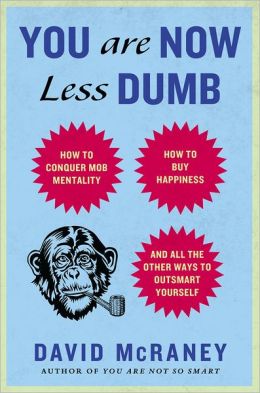 In one chapter of the altogether illuminating You Are Now Less Dumb: How to Conquer Mob Mentality, How to Buy Happiness, and All the Other Ways to Outsmart Yourself (public library) – a “book about self-delusion, but also a celebration of it,” a fascinating and pleasantly uncomfortable-making look at why “self-delusion is as much a part of the human condition as fingers and toes” – David McRaney examines one particularly fascinating manifestation of our self-delusion: The Benjamin Franklin Effect.
In one chapter of the altogether illuminating You Are Now Less Dumb: How to Conquer Mob Mentality, How to Buy Happiness, and All the Other Ways to Outsmart Yourself (public library) – a “book about self-delusion, but also a celebration of it,” a fascinating and pleasantly uncomfortable-making look at why “self-delusion is as much a part of the human condition as fingers and toes” – David McRaney examines one particularly fascinating manifestation of our self-delusion: The Benjamin Franklin Effect.
This particular form of self-delusion has to do with our tendency to do nice things to people we like and bad things to those we dislike. But what the psychology behind the effect reveals is an inverse relationship – a reverse-engineering of attitudes that takes place as we grow to like people for whom we do nice things and dislike those to whom we are unkind. This curious effect is named after a specific incident early in the Founding Father’s political career.
Franklin, born one of seventeen children to poor parents, entered this world – despite his parents’ and society’s priorities in his favor relative to his siblings – with very low odds of becoming an educated scientist, gentleman, scholar, entrepreneur, and, perhaps most of all, a man of significant political power. To compensate for his unfavorable givens, he quickly learned formidable people skills and became “a master of the game of personal politics.” When he ran for his second term as a clerk, a peer whose name Franklin never mentions in his autobiography delivered a long election speech censuring the future Founding Father and tarnishing his reputation.
Although Franklin won, he was furious with his opponent and, observing that this was “a gentleman of fortune and education” who might one day come to hold great power in government, rather concerned about future frictions with him. The troll had to be tamed, and tamed shrewdly. McRaney writes:
Franklin set out to turn his hater into a fan, but he wanted to do it without “paying any servile respect to him.” Franklin’s reputation as a book collector and library founder gave him a standing as a man of discerning literary tastes, so Franklin sent a letter to the hater asking if he could borrow a specific selection from his library, one that was a “very scarce and curious book.” The rival, flattered, sent it right away. Franklin sent it back a week later with a thank-you note. Mission accomplished. The next time the legislature met, the man approached Franklin and spoke to him in person for the first time. Franklin said the man “ever after manifested a readiness to serve me on all occasions, so that we became great friends, and our friendship continued to his death.”
Read more about what modern psychology has revealed about this curious phenomenon here, then complement it with Kierkegaard on why haters hate.
8. HANNAH ARENDT: THINK RATHER THAN KNOW
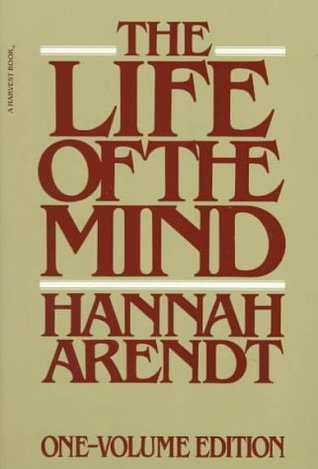 In 1973, Hannah Arendt became the first woman to speak at the prestigious Gifford Lectures – an annual series established in 1888 aiming “to promote and diffuse the study of natural theology in the widest sense of the term,” bridging science, philosophy, and spirituality, an ancient quest of enduring urgency to this day. Over the years, the Gifford Lectures have drawn such celebrated minds as William James, Werner Heisenberg, Niels Bohr, Iris Murdoch, and Carl Sagan, whose 1985 lecture was later published as the spectacular posthumous volume Varieties of Scientific Experience. Arendt’s own lecture was later expanded and published as The Life of the Mind (public library), an immeasurably stimulating exploration of thinking – a process we take for so obvious and granted as to be of no interest, yet one bridled with complexities and paradoxes that often keep us from seeing the true nature of reality. With extraordinary intellectual elegance, Arendt draws “a distinguishing line between truth and meaning, between knowing and thinking,” and makes a powerful case for the importance of that line in the human experience.
In 1973, Hannah Arendt became the first woman to speak at the prestigious Gifford Lectures – an annual series established in 1888 aiming “to promote and diffuse the study of natural theology in the widest sense of the term,” bridging science, philosophy, and spirituality, an ancient quest of enduring urgency to this day. Over the years, the Gifford Lectures have drawn such celebrated minds as William James, Werner Heisenberg, Niels Bohr, Iris Murdoch, and Carl Sagan, whose 1985 lecture was later published as the spectacular posthumous volume Varieties of Scientific Experience. Arendt’s own lecture was later expanded and published as The Life of the Mind (public library), an immeasurably stimulating exploration of thinking – a process we take for so obvious and granted as to be of no interest, yet one bridled with complexities and paradoxes that often keep us from seeing the true nature of reality. With extraordinary intellectual elegance, Arendt draws “a distinguishing line between truth and meaning, between knowing and thinking,” and makes a powerful case for the importance of that line in the human experience.
Arendt asks:
What are we “doing” when we do nothing but think? Where are we when we, normally always surrounded by our fellow-men, are together with no one but ourselves?
Arendt considers the crucial necessity of never ceasing to pursue questions, those often unanswerable questions, of meaning over so-called truth – something doubly needed in our era of ready-made “opinions” based on neatly packaged “facts”:
By posing the unanswerable questions of meaning, men establish themselves as question-asking beings. Behind all the cognitive questions for which men find answers, there lurk the unanswerable ones that seem entirely idle and have always been denounced as such. It is more than likely that men, if they were ever to lose the appetite for meaning we call thinking and cease to ask unanswerable questions, would lose not only the ability to produce those thought-things that we call works of art but also the capacity to ask all the answerable questions upon which every civilization is founded… While our thirst for knowledge may be unquenchable because of the immensity of the unknown, the activity itself leaves behind a growing treasure of knowledge that is retained and kept in store by every civilization as part and parcel of its world. The loss of this accumulation and of the technical expertise required to conserve and increase it inevitably spells the end of this particular world.
Read more here.
9. ANNE LAMOTT: LET GO OF PERFECTIONISM
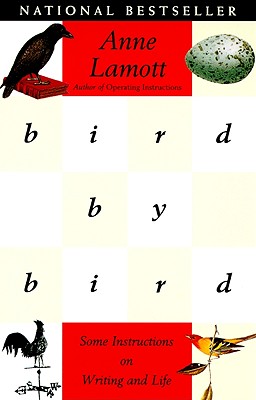 In her indispensable Bird by Bird: Some Instructions on Writing and Life (public library) – one of the finest books on writing ever written, a treasure trove of insight both practical and profound – Anne Lamott explores how perfectionism paralyzes us creatively.
In her indispensable Bird by Bird: Some Instructions on Writing and Life (public library) – one of the finest books on writing ever written, a treasure trove of insight both practical and profound – Anne Lamott explores how perfectionism paralyzes us creatively.
She recounts this wonderful anecdote, after which the book is titled:
Thirty years ago my older brother, who was ten years old at the time, was trying to get a report on birds written that he’d had three months to write, which was due the next day. We were out at our family cabin in Bolinas, and he was at the kitchen table close to tears, surrounded by binder paper and pencils and unopened books on birds, immobilized by the hugeness of the task ahead. Then my father sat down beside him, put his arm around my brother’s shoulder, and said, “Bird by bird, buddy. Just take it bird by bird.”
In this bird-by-bird approach to writing, there is no room for perfectionism. (Neil Gaiman famously advised, “Perfection is like chasing the horizon. Keep moving.” and David Foster Wallace admonished, “If your fidelity to perfectionism is too high, you never do anything.”) Lamott cautions:
Perfectionism is the voice of the oppressor, the enemy of the people. It will keep you cramped and insane your whole life, and it is the main obstacle between you and a shitty first draft.
[…]
Perfectionism is a mean, frozen form of idealism, while messes are the artist’s true friend. What people somehow (inadvertently, I’m sure) forgot to mention when we were children was that we need to make messes in order to find out who we are and why we are here – and, by extension, what we’re supposed to be writing.
Read more here and couple with Lamott on how to stop keeping yourself small by people-pleasing.
10. CARL SAGAN: MASTER CRITICAL THINKING
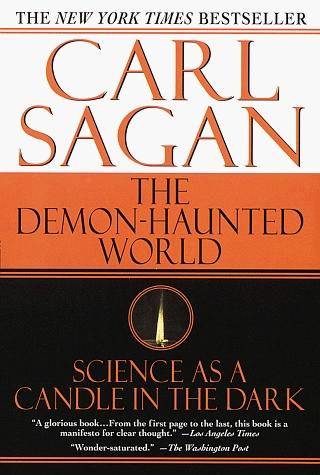 Carl Sagan endures as our era’s greatest patron saint of reason and common sense – a true master of the vital balance between skepticism and openness. In The Demon-Haunted World: Science as a Candle in the Dark (public library) – the same indispensable volume that gave us Sagan’s timeless meditation on science and spirituality, published mere months before his death in 1996 – Sagan shares his secret to upholding the rites of reason, even in the face of society’s most shameless untruths and outrageous propaganda.
Carl Sagan endures as our era’s greatest patron saint of reason and common sense – a true master of the vital balance between skepticism and openness. In The Demon-Haunted World: Science as a Candle in the Dark (public library) – the same indispensable volume that gave us Sagan’s timeless meditation on science and spirituality, published mere months before his death in 1996 – Sagan shares his secret to upholding the rites of reason, even in the face of society’s most shameless untruths and outrageous propaganda.
In a chapter titled “The Fine Art of Baloney Detection,” he reflects on the many types of deception to which we’re susceptible – from psychics to religious zealotry to paid product endorsements by scientists, which he held in especially low regard, noting that they “betray contempt for the intelligence of their customers” and “introduce an insidious corruption of popular attitudes about scientific objectivity.” But rather than preaching from the ivory tower of self-righteousness, Sagan approaches the subject from the most vulnerable of places – having just lost both of his parents, he reflects on the all too human allure of promises of supernatural reunions in the afterlife, reminding us that falling for such fictions doesn’t make us stupid or bad people, but simply means that we need to equip ourselves with the right tools against them.
Through their training, scientists are equipped with what Sagan calls a “baloney detection kit” – a set of cognitive tools and techniques that fortify the mind against penetration by falsehoods:
The kit is brought out as a matter of course whenever new ideas are offered for consideration. If the new idea survives examination by the tools in our kit, we grant it warm, although tentative, acceptance. If you’re so inclined, if you don’t want to buy baloney even when it’s reassuring to do so, there are precautions that can be taken; there’s a tried-and-true, consumer-tested method.
But the kit, Sagan argues, isn’t merely a tool of science – rather, it contains invaluable tools of healthy skepticism that apply just as aptly, and just as necessarily, to everyday life. By adopting the kit, we can all shield ourselves against clueless guile and deliberate manipulation. Sagan shares nine of these tools:
- Wherever possible there must be independent confirmation of the “facts.”
- Encourage substantive debate on the evidence by knowledgeable proponents of all points of view.
- Arguments from authority carry little weight – “authorities” have made mistakes in the past. They will do so again in the future. Perhaps a better way to say it is that in science there are no authorities; at most, there are experts.
- Spin more than one hypothesis. If there’s something to be explained, think of all the different ways in which it could be explained. Then think of tests by which you might systematically disprove each of the alternatives. What survives, the hypothesis that resists disproof in this Darwinian selection among “multiple working hypotheses,” has a much better chance of being the right answer than if you had simply run with the first idea that caught your fancy.
- Try not to get overly attached to a hypothesis just because it’s yours. It’s only a way station in the pursuit of knowledge. Ask yourself why you like the idea. Compare it fairly with the alternatives. See if you can find reasons for rejecting it. If you don’t, others will.
- Quantify. If whatever it is you’re explaining has some measure, some numerical quantity attached to it, you’ll be much better able to discriminate among competing hypotheses. What is vague and qualitative is open to many explanations. Of course there are truths to be sought in the many qualitative issues we are obliged to confront, but finding them is more challenging.
- If there’s a chain of argument, every link in the chain must work (including the premise) – not just most of them.
- Occam’s Razor. This convenient rule-of-thumb urges us when faced with two hypotheses that explain the data equally well to choose the simpler.
- Always ask whether the hypothesis can be, at least in principle, falsified. Propositions that are untestable, unfalsifiable are not worth much. Consider the grand idea that our Universe and everything in it is just an elementary particle – an electron, say – in a much bigger Cosmos. But if we can never acquire information from outside our Universe, is not the idea incapable of disproof? You must be able to check assertions out. Inveterate skeptics must be given the chance to follow your reasoning, to duplicate your experiments and see if they get the same result.
Read more, including Sagan’s list of the twenty most common pitfalls of common sense and how to counter them, here.
11. REBECCA SOLNIT: GET LOST TO FIND YOURSELF
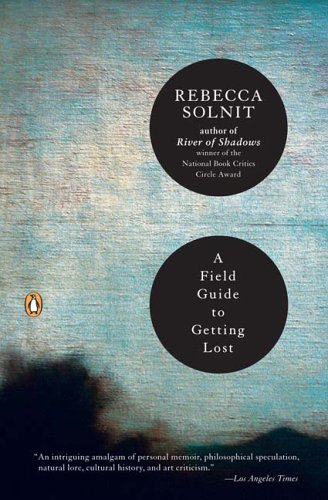 “On how one orients himself to the moment,”Henry Miller wrote in reflecting on the art of living, “depends the failure or fruitfulness of it.”Indeed, this act of orienting ourselves – to the moment, to the world, to our own selves – is perhaps the most elusive art of all, and our attempts to master it often leave us fumbling, frustrated, discombobulated. And yet therein lies our greatest capacity for growth and self-transcendence.
“On how one orients himself to the moment,”Henry Miller wrote in reflecting on the art of living, “depends the failure or fruitfulness of it.”Indeed, this act of orienting ourselves – to the moment, to the world, to our own selves – is perhaps the most elusive art of all, and our attempts to master it often leave us fumbling, frustrated, discombobulated. And yet therein lies our greatest capacity for growth and self-transcendence.
Rebecca Solnit, whose mind and writing are among the most consistently enchanting of our time, explores this tender tango with the unknown in her altogether sublime collection A Field Guide to Getting Lost (public library).
Solnit writes in the opening essay:
Leave the door open for the unknown, the door into the dark. That’s where the most important things come from, where you yourself came from, and where you will go. Three years ago I was giving a workshop in the Rockies. A student came in bearing a quote from what she said was the pre-Socratic philosopher Meno. It read, “How will you go about finding that thing the nature of which is totally unknown to you?” I copied it down, and it has stayed with me since. The student made big transparent photographs of swimmers underwater and hung them from the ceiling with the light shining through them, so that to walk among them was to have the shadows of swimmers travel across your body in a space that itself came to seem aquatic and mysterious. The question she carried struck me as the basic tactical question in life. The things we want are transformative, and we don’t know or only think we know what is on the other side of that transformation. Love, wisdom, grace, inspiration – how do you go about finding these things that are in some ways about extending the boundaries of the self into unknown territory, about becoming someone else?
Solnit turns to Edgar Allan Poe, who argued that “in matters of philosophical discovery … it is the unforeseen upon which we must calculate most largely,” and considers the deliberate juxtaposition of the rational, methodical act of calculation with the ineffable, intangible nature of the unforeseen:
How do you calculate upon the unforeseen? It seems to be an art of recognizing the role of the unforeseen, of keeping your balance amid surprises, of collaborating with chance, of recognizing that there are some essential mysteries in the world and thereby a limit to calculation, to plan, to control. To calculate on the unforeseen is perhaps exactly the paradoxical operation that life most requires of us.
The poet John Keats captured this paradoxical operation memorably in his notion of “negative capability,” which Solnit draws on before turning to another literary luminary, Walter Benjamin, who considered the difference between not finding your way and losing yourself – something he called “the art of straying.” Solnit writes:
To lose yourself: a voluptuous surrender, lost in your arms, lost to the world, utterly immersed in what is present so that its surroundings fade away. In Benjamin’s terms, to be lost is to be fully present, and to be fully present is to be capable of being in uncertainty and mystery. And one does not get lost but loses oneself, with the implication that it is a conscious choice, a chosen surrender, a psychic state achievable through geography. That thing the nature of which is totally unknown to you is usually what you need to find, and finding it is a matter of getting lost.
Read more here.
12. BRUCE LEE: BE LIKE WATER
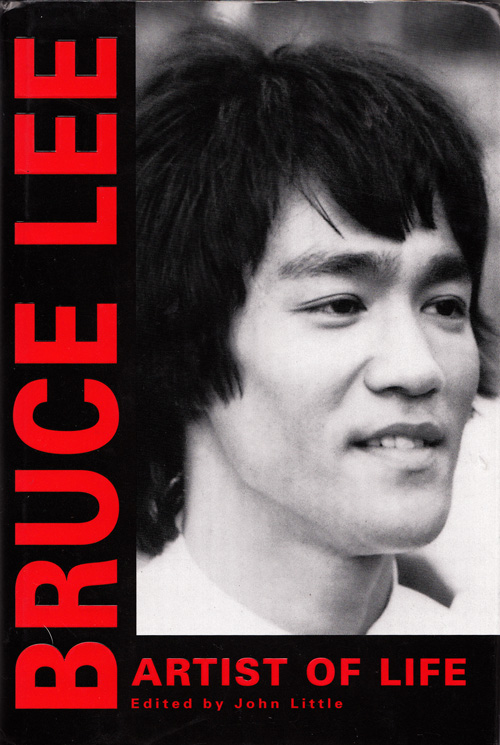 With his singular blend of physical prowess and metaphysical wisdom, coupled with his tragic untimely death, legendary Chinese-American martial artist, philosopher, and filmmaker Bruce Lee (1940-1973) is one of those rare cultural icons whose ethos and appeal remain timeless, attracting generation after generation of devotees. Inspired by the core principles of Wing Chun, the ancient Chinese conceptual martial art, which he learned from his only formal martial arts teacher, Yip Man, between the ages of thirteen and eighteen. When he left Hong Kong in 1959, Lee adapted Wing Chun into his own version, Jun Fan Gung Fu – literal translation: Bruce Lee’s Kung Fu – and popularized it in America.
With his singular blend of physical prowess and metaphysical wisdom, coupled with his tragic untimely death, legendary Chinese-American martial artist, philosopher, and filmmaker Bruce Lee (1940-1973) is one of those rare cultural icons whose ethos and appeal remain timeless, attracting generation after generation of devotees. Inspired by the core principles of Wing Chun, the ancient Chinese conceptual martial art, which he learned from his only formal martial arts teacher, Yip Man, between the ages of thirteen and eighteen. When he left Hong Kong in 1959, Lee adapted Wing Chun into his own version, Jun Fan Gung Fu – literal translation: Bruce Lee’s Kung Fu – and popularized it in America.
In 1971, at the peak of his career, Lee starred in four episodes of the short-lived TV series Longstreet. In one of them, he delivered his most oft-cited metaphor for the philosophy of Gung Fu: “Be like water,” at the heart of which is the Chinese concept of wu wei – “trying not to try.” In Bruce Lee: Artist of Life (public library) – a compendium of his never-before-published private letters, notes, and poems – Lee traces the thinking that originated his famous metaphor, which came after a period of frustration with his inability to master “the art of detachment” that Yip Man was trying to impart on him. Lee recounts:
After spending many hours meditating and practicing, I gave up and went sailing alone in a junk. On the sea I thought of all my past training and got mad at myself and punched the water! Right then – at that moment – a thought suddenly struck me; was not this water the very essence of gung fu? Hadn’t this water just now illustrated to me the principle of gung fu? I struck it but it did not suffer hurt. Again I struck it with all of my might – yet it was not wounded! I then tried to grasp a handful of it but this proved impossible. This water, the softest substance in the world, which could be contained in the smallest jar, only seemed weak. In reality, it could penetrate the hardest substance in the world. That was it! I wanted to be like the nature of water.
Suddenly a bird flew by and cast its reflection on the water. Right then I was absorbing myself with the lesson of the water, another mystic sense of hidden meaning revealed itself to me; should not the thoughts and emotions I had when in front of an opponent pass like the reflection of the birds flying over the water? This was exactly what Professor Yip meant by being detached – not being without emotion or feeling, but being one in whom feeling was not sticky or blocked. Therefore in order to control myself I must first accept myself by going with and not against my nature.
[…]
Water is so fine that it is impossible to grasp a handful of it; strike it, yet it does not suffer hurt; stab it, and it is not wounded; sever it, yet it is not divided. It has no shape of its own but molds itself to the receptacle that contains it. When heated to the state of steam it is invisible but has enough power to split the earth itself. When frozen it crystallizes into a mighty rock. First it is turbulent like Niagara Falls, and then calm like a still pond, fearful like a torrent, and refreshing like a spring on a hot summer’s day.
Lee illustrates the power of this water-like disposition with a passage from the Tao Te Ching, Lao Tzu’s famous teachings:
The rivers and seas are lords of a hundred valleys. This is because their strength is in lowliness; they are kings of them all. So it is that the perfect master wishing to lead them, he follows. Thus, though he is above them, he follows. Thus, though he is above them, men do not feel him to be an injury. And since he will not strive, none strive with him.
Read more here.
13: MAYA ANGELOU: CHOOSE COURAGE OVER CYNICISM
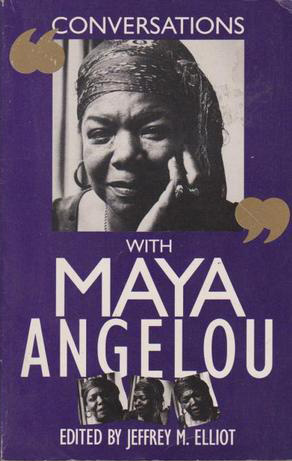 In 1982, nearly a decade after their spectacular conversation about freedom, beloved poet, memoirist, dramatist, actor, producer, filmmaker, and civil rights activist Maya Angelou and celebrated interviewer Bill Moyers traveled together to the beautiful Texas countryside to discuss the ugliest aspects of human nature at a conference titled Facing Evil. It was a subject with which Angelou, the survivor of childhood rape and courageous withstander of lifelong racism, was intimately acquainted. In a recent remembrance of his friend, Moyers shares excerpts from the 1988 documentary about the event, affirming once more that Angelou was nothing if not a champion of the human spirit and its highest potentiality for good.
In 1982, nearly a decade after their spectacular conversation about freedom, beloved poet, memoirist, dramatist, actor, producer, filmmaker, and civil rights activist Maya Angelou and celebrated interviewer Bill Moyers traveled together to the beautiful Texas countryside to discuss the ugliest aspects of human nature at a conference titled Facing Evil. It was a subject with which Angelou, the survivor of childhood rape and courageous withstander of lifelong racism, was intimately acquainted. In a recent remembrance of his friend, Moyers shares excerpts from the 1988 documentary about the event, affirming once more that Angelou was nothing if not a champion of the human spirit and its highest potentiality for good.
In one of the most poignant passages, Angelou reflects on how refusing to speak for five years after being raped as a child (“I won’t say severely raped; all rape is severe,” Angelou notes in one of her characteristically piercing asides) shaped her journey:
To show you … how out of evil there can come good, in those five years I read every book in the black school library. I read all the books I could get from the white school library. I memorized James Weldon Johnson, Paul Laurence Dunbar, Countee Cullen and Langston Hughes. I memorized Shakespeare, whole plays, fifty sonnets. I memorized Edgar Allen Poe, all the poetry – never having heard it, I memorized it. I had Longfellow, I had Guy de Maupassant, I had Balzac, Rudyard Kipling – I mean, it was catholic kind of reading, and catholic kind of storing.
[…]
Out of this evil, which was a dire kind of evil, because rape on the body of a young person more often than not introduces cynicism, and there is nothing quite so tragic as a young cynic, because it means the person has gone from knowing nothing to believing nothing. In my case I was saved in that muteness… And I was able to draw from human thought, human disappointments and triumphs, enough to triumph myself.
Angelou’s most soul-expanding point is that courage – something she not only embodied but also championed beautifully in her children’s book illustrated by Basquiat – is our indelible individual capacity and our shared existential responsibility:
We need the courage to create ourselves daily, to be bodacious enough to create ourselves daily – as Christians, as Jews, as Muslims, as thinking, caring, laughing, loving human beings. I think that the courage to confront evil and turn it by dint of will into something applicable to the development of our evolution, individually and collectively, is exciting, honorable.
Read more here.
14. EMERSON: CULTIVATE TRUE FRIENDSHIP
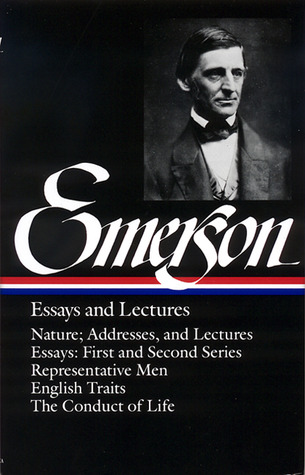 It’s been argued that friendship is a greater gift than romantic love (though it’s not uncommon for one to turn abruptly into the other), but whatever the case, friendship is certainly one of the most rewarding fruits of life – from the sweetness of childhood friendships to the trickiness of workplace ones. This delicate dance has been examined by thinkers from Aristotle to Francis Bacon to Thoreau, but none more thoughtfully than by Ralph Waldo Emerson. In an essay on the subject, found in his altogether soul-expanding Essays and Lectures (public library; free download), Emerson considers the intricate dynamics of friendship, beginning with our often underutilized innate capacities:
It’s been argued that friendship is a greater gift than romantic love (though it’s not uncommon for one to turn abruptly into the other), but whatever the case, friendship is certainly one of the most rewarding fruits of life – from the sweetness of childhood friendships to the trickiness of workplace ones. This delicate dance has been examined by thinkers from Aristotle to Francis Bacon to Thoreau, but none more thoughtfully than by Ralph Waldo Emerson. In an essay on the subject, found in his altogether soul-expanding Essays and Lectures (public library; free download), Emerson considers the intricate dynamics of friendship, beginning with our often underutilized innate capacities:
We have a great deal more kindness than is ever spoken. Barring all the selfishness that chills like east winds the world, the whole human family is bathed with an element of love like a fine ether… The emotions of benevolence … from the highest degree of passionate love, to the lowest degree of good will, they make the sweetness of life.
[…]
What is so delicious as a just and firm encounter of two, in a thought, in a feeling? How beautiful, on their approach to this beating heart, the steps and forms of the gifted and the true! The moment we indulge our affections, the earth is metamorphosed; there is no winter, and no night; all tragedies, all ennuis vanish; all duties even; nothing fills the proceeding eternity but the forms all radiant of beloved persons. Let the soul be assured that somewhere in the universe it should rejoin its friend, and it would be content and cheerful alone for a thousand years.
Emerson goes on to consider the two essential conditions of friendship – read more here.
15. ELEANOR ROOSEVELT: LIVE BY YOUR OWN STANDARDS
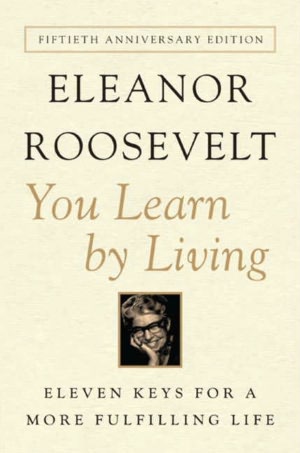 Eleanor Roosevelt endures as one of the most beloved and influential luminaries in modern history – a relentless champion of working women and underprivileged youth, the longest-serving American First Lady, and the author of some beautiful, if controversial, love letters.
Eleanor Roosevelt endures as one of the most beloved and influential luminaries in modern history – a relentless champion of working women and underprivileged youth, the longest-serving American First Lady, and the author of some beautiful, if controversial, love letters.
When she was 76, Roosevelt penned You Learn by Living: Eleven Keys for a More Fulfilling Life (public library) – a relentlessly insightful compendium of her philosophy on the meaningful life.
Roosevelt considers the seedbed of happiness:
Happiness is not a goal, it is a by-product. Paradoxically, the one sure way not to be happy is deliberately to map out a way of life in which one would please oneself completely and exclusively. After a short time, a very short time, there would be little that one really enjoyed. For what keeps our interest in life and makes us look forward to tomorrow is giving pleasure to other people.
[…]
Someone once asked me what I regarded as the three most important requirements for happiness. My answer was: ‘A feeling that you have been honest with yourself and those around you; a feeling that you have done the best you could both in your personal life and in your work; and the ability to love others.’
Indeed, personal integrity – without which it is impossible to be honest with oneself – is a centerpiece of our capacity for happiness. In a chapter titled “The Right to Be an Individual,” Roosevelt considers the moral responsibility of living what you believe – of fully inhabiting your inner life – as the foundation of integrity and, more than that, of what it means to be human:
It’s your life – but only if you make it so. The standards by which you live must be your own standards, your own values, your own convictions in regard to what is right and wrong, what is true and false, what is important and what is trivial. When you adopt the standards and the values of someone else or a community or a pressure group, you surrender your own integrity. You become, to the extent of your surrender, less of a human being.
Read more here.

